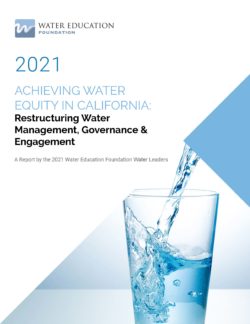According to the US Water Alliance, “water equity promotes the provision of reliable, safe, and accessible water services for all.” However, there are at least 1 million Californians living without access to clean, safe drinking water and many more across the country.
Vanessa De Anda, Water Resources Planner, spent last year examining this topic with the 2021 cohort of the California Water Leaders Program. De Anda is the fourth Woodard & Curran employee to enroll in this program, which brings together entry to mid-level professionals in stakeholder groups across the water industry to learn about water issues, gain leadership skills, and learn to make active, cooperative decisions regarding water resource issues.
There are three main components to the program – mentorship, facility tours, and a final report. De Anda’s mentor worked for a public agency, providing her with different insight on the issues she works with daily as a planner. The tours occurred virtually, but the ability to see actual systems in California provided a new perspective on the magnitude of each facility. The 2021 class was assigned the topic of water equity for their research and final report, which was then presented to the Water Environment Foundation Board and published online by the California Water Leaders Program.
 California was the first state to declare access to safe, clean, affordable, and accessible water as a basic human right. However, the class’s final report entitled
California was the first state to declare access to safe, clean, affordable, and accessible water as a basic human right. However, the class’s final report entitled 